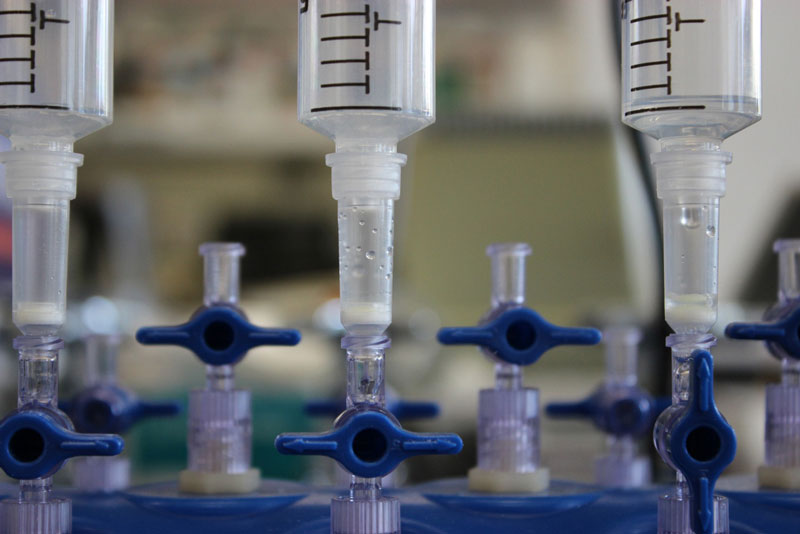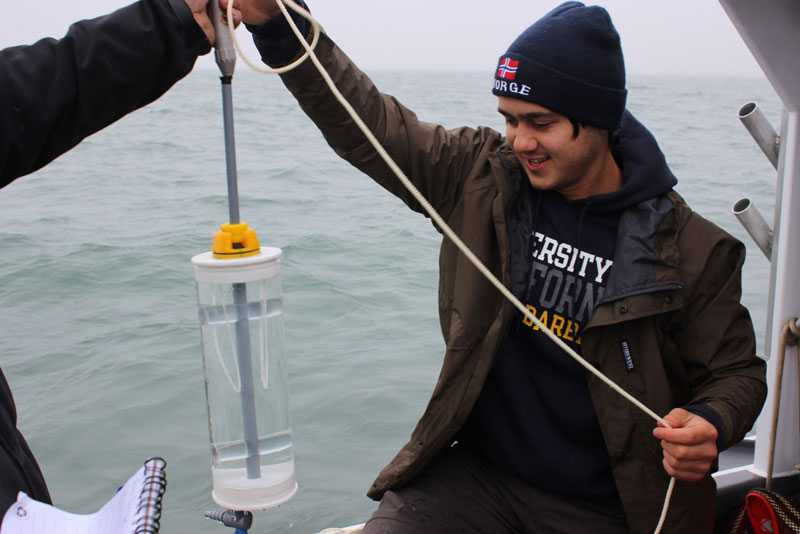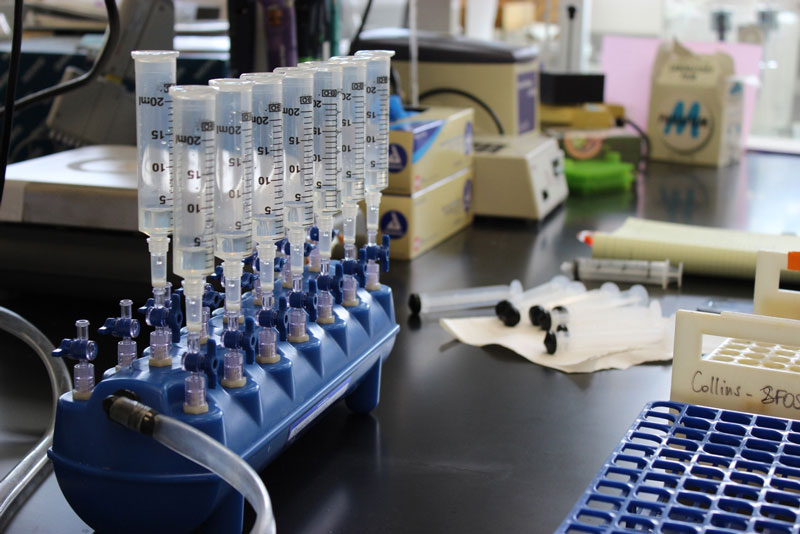
By Brian Philip Ulaski, Graduate Student – Biological Oceanography, University of Alaska Fairbanks

Washing away unwanted organic and inorganic materials from solution containing extracted microbial DNA. Image courtesy of the Mapping the Uncharted Diversity of Arctic Marine Microbes expedition. Download larger version (jpg, 299 KB).
Now that we’ve finished collecting our samples, it’s time for us to trade in our survival suits for lab coats.
Several expeditions to the Arctic in 2015 provided our lab with samples for subsequent molecular surveys of extreme microbial communities. The Trophic Interactions in the Barents Sea Integrated Assessment (TIBIA) cruise, the Arctic Marine Biodiversity Observing Network (AMBON) cruise, and a few smaller-scale opportunistic ventures brought our lab members out to the oceanic gateways to the Arctic Ocean: the Barents and Chukchi seas.

Fishing for microbes in the Chukchi Sea. Image courtesy of the Mapping the Uncharted Diversity of Arctic Marine Microbes expedition. Download larger version (jpg, 534 KB).
The composite of over 200 samples from these expeditions will remain frozen (-80°C) until they undergo processing in the lab. The first step toward investigating the diversity of marine bacteria, archaea, and single-celled eukaryotes is to extract DNA from their cells, which have been retained onto filters.
How are your cooking skills? If you’ve ever followed a recipe to whip up your favorite entrée, you already have the basic know-how needed to extract DNA (assuming you didn’t burn down the kitchen). Extracting and isolating DNA is simply like following a recipe.

Vortexing microbial cells in cell-releasing solution to remove them from filter membranes (upper left). Awaiting transfer to tubes containing sand-like beads for the lytic process. Image courtesy of the Mapping the Uncharted Diversity of Arctic Marine Microbes expedition. Download larger version (jpg, 265 KB).
The first ingredient our recipe calls for are the microbial cells, which need to be released from the filters we collected them in. The cells must then be lysed (breaking down of cell membranes). To chemically and physically expose the DNA, the next ingredients our recipe calls for are lytic enzymes and small sand-like beads. These will be mixed in with the cells, which are then vortexed together at high speeds. This process bursts open the cells, exposing the DNA. Once the DNA is released from the cells, unwanted organic and inorganic materials are removed from the solution (through a series of additional cleansing steps), and the DNA at this point has essentially been isolated—voilà!

Vacuum pump apparatus for cleaning up and isolating genetic material. Image courtesy of the Mapping the Uncharted Diversity of Arctic Marine Microbes expedition. Download larger version (jpg, 378 KB).
Status report: DNA from all of our Barents Sea samples (n = 62) have been extracted. Samples from the Chukchi Sea (n = 178) are currently undergoing DNA extractions in the lab. Soon after DNA is extracted from each sample, polymerase chain reaction (PCR) amplification of targeted regions and the eventual sequencing of those regions will bring us closer to our goal of broadening the scope of knowledge on the biodiversity of Arctic marine microbes.